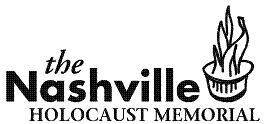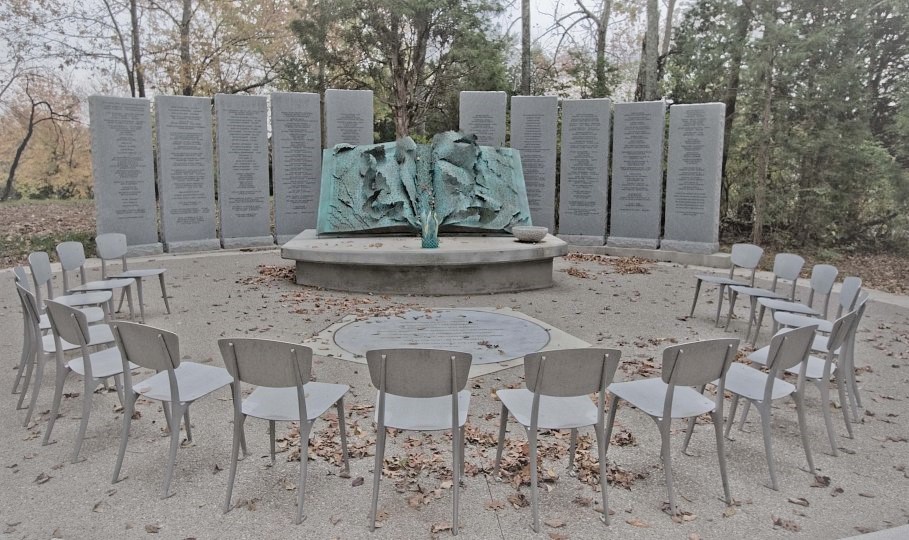Description of the Memorial
The Holocaust is the most horrific event to occur in human history. It was a state’s created attempt toward the complete annihilation of European Jewry and created some of the most disturbing lessons of humanity’s capacity for genocide. Many American communities of all sizes have created a Memorial to show respect and honor those who were victims. Some survived; most did not. The Nashville Survivor community and their descendants have dreamed for many years about creating a Memorial and educational space. The intention is to recognize and honor their loved ones, many of whom have no graves, and to create an area for personal reflection. The site provides an educational opportunity to learn about the Holocaust through the history of Nashville Survivors and their families. They believe that the promise that they made to humanity, “Never Again to us or anyone,” is an obligation they must keep. This site will serve as a catalyst for future generations. Based on the wishes of the Survivors, The Gordon Jewish Community Center has donated the land for the Memorial. The area includes: a Memorial wall inscribed with the names of deceased Holocaust Survivors and victims, an eternal flame, a symbolic sculpture inspired by a Holocaust survivor who has passed away and a reflection area with seating. The Memorial is handicap accessible.
Our Mission
The Holocaust may be receding into the past, but its lessons have and will continue to be timely. Headlines continue to report incidents of anti-Semitism and genocide. Holocaust deniers are a constant challenge. The Memorial site has two goals. The Survivor population is aging. They want to be assured that concrete evidence of their existence and what they endured is chronicled. They want a place for themselves and their loved ones to be remembered. Many have waited for years to have a place to recognize and mourn their loved ones. The Memorial site includes educational opportunities for visitors. The goal is to tell the history of the Holocaust through the personal stories of the Nashvillians who are represented there. The name of each European hometown of the Survivors is presented at the pathway leading up to the Memorial. Visitors may pick up an educational brochure as they enter the Memorial. A self-guided audio tour is available. Secondly, the Memorial is conceptualized to be a Living Memorial with a significant role for the general Middle Tennessee community. Non-Jewish individuals and groups like churches, as well as communal and youth groups, are encouraged to visit the site, which serves as the only location that makes this history and its lessons available to the general public in Middle Tennessee. Through public awareness and school outreach, those who have never met a Jewish person or been on the campus have the opportunity to interface with the Jewish community. Educational programs are planned for the public. The opportunity to have a role in transmitting the lessons of the Holocaust is significant. Students indicate that learning this history has an impact on their lives and some of the future decisions they make. There are also limited opportunities for the adult population to deal with the history or confront the important issues it raises.
It has been almost seventy-five years since the liberation of the death camps, and World War II. The number of eyewitnesses declines each day. As each year passes, the ability to sustain the important lessons learned becomes more challenging. The Holocaust has a unique role in history. Elie Wiesel has said, “While every victim was not a Jew, every Jew was a victim.” The Holocaust has a pivotal place in Jewish history but just as important for the future, a universal message for humanity. The United States Holocaust Memorial Museum greets 2 million visitors a year. Not everyone is able to travel to Washington and so it is important to have local contact and impact. The Memorial’s goal is to sustain a significant physical reminder while creating an environment for learning and reflection.
Above image via Manuel Zeitlin Architects

